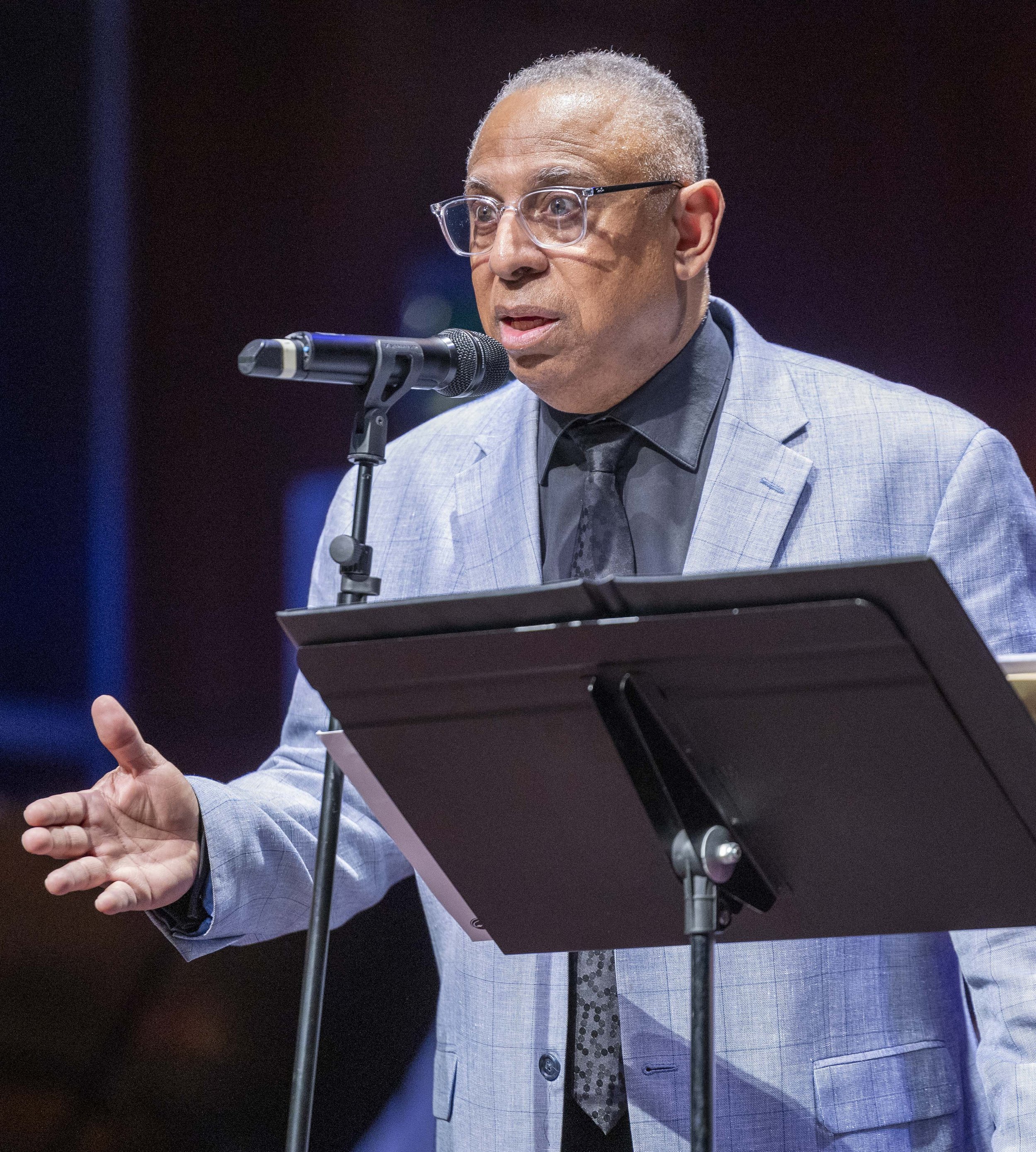Dynamic Energy and Improvisation: The Santa Monica College Jazz Ensemble Live



For over two decades, Frederick (Keith) Fiddmont has been at the helm of the Santa Monica College (SMC) Jazz Ensemble, shaping the dynamic of the group while catering to the individual talents of each artist. An accomplished saxophonist and educator, Fiddmont said, “Jazz is the closest thing we have to a meritocracy,” where one's contribution to the arts is valued for its authenticity and creativity rather than its status or privilege.
Opening the evening, Fiddmont’s reflection on the program's theme, emphasizing the trials and tribulations of artists who fought for the recognition of their unique genius, led into song. As Hugo Juarez held the baseline, the ensemble played their first piece, Horace Silver’s “Cape Verdean Blues.”
“Everyone says my jazz is very Japanese,” said Aoi Kuroha, a Japanese foreign exchange student and trumpeter for the SMC Jazz Ensemble. Having only studied jazz for two years, the same amount of time she’s spent in the United States, she said that she’s “always listening,” and acclimating herself seamlessly to the nuances of American jazz. That attentiveness was on full display as the ensemble transitioned into their next piece, “A Relative Calm” by Oliver Nelson featuring a solo performance from Kuroha.
In stark contrast to the serenity of a jazz ballad like “A Relative Calm,” the ensemble moved with energy to “Walkin’ and Swingin’” by Mary Lou Williams. Yet before the notes played, as he’d done with each piece, Fiddmont spoke a bit on the history.
Fiddmont highlighted Williams’ ability to not only thrive, but carve a powerful legacy in a male-dominated industry, fighting the double edged sword of sexism and racism.
The crowd responded to the glimpses into the struggles artists like Williams faced, with even Fiddmont’s sister Lynne Fiddmont, expressing her appreciation. “I enjoyed the history that I learned. You know, I’m Keith’s sister, but I don't know all the history that he knows,” she said.
The insights continued as Fiddmont introduced Melba Liston, who fought alongside Williams and arranged the ensemble's next piece, “If You Could See Me Now,” composed by Tadd Dameron and featuring a solo performance by Aidan Farrell.
Farrell, a returning tenor saxophonist with the ensemble, spoke of his deep appreciation for the sound. “Jazz is an art form that constantly confronts you with its heritage, born out of the black experience,” he said.
Reflecting on its evolution, he said, “From its origins in Congo Square to where it exists today, and its state of ever evolving fusion, it is something that constantly forces you to reconcile the cruelty that spurred its origin.”
With the support of his friends and fellow saxophonists Cameron Ravare and Mateo Garcia, Farrell took center stage for his solo in “If You Could See Me Now.” The three often spend time together outside of the ensemble, and hang out playing basketball, an offstage friendship that has grown alongside their musical journeys.
Following “If You Could See Me Now,” came the ensemble's rendition of one of Billy Strayhorn's most renowned pieces, “Chelsea Bridge,” once again accompanied by insights from Fiddmont on challenges the composer faced as not only a Black man, but a member of the LGBTQ+ community.
After “Chelsea Bridge,” the ensemble played “Almost Cried,” another piece featuring Strayhorn, composed by Duke Ellington, whose compositions and leadership help define the sound of American jazz. The ensemble then rounded out the performance with “Sidewinder” by Lee Morgan, bringing back the energy to a lively conclusion.
From the packed room filled with family, friends and simply lovers of jazz music, the energy was palpable. A sense of accomplishment filled the air as the ensemble finished their set, each member contributing their unique sound to the performance.
Among the audience was LeRoy Downs from KCRW, who said he was happy to see “our young burners get out with some of these old cats.” He added that it’s rewarding to watch them “have their own sound and signatures, learning from some of the things that they’ve been taught here.” In the words of Fiddmont, “you make it music” when you “add your musicality to it.”
